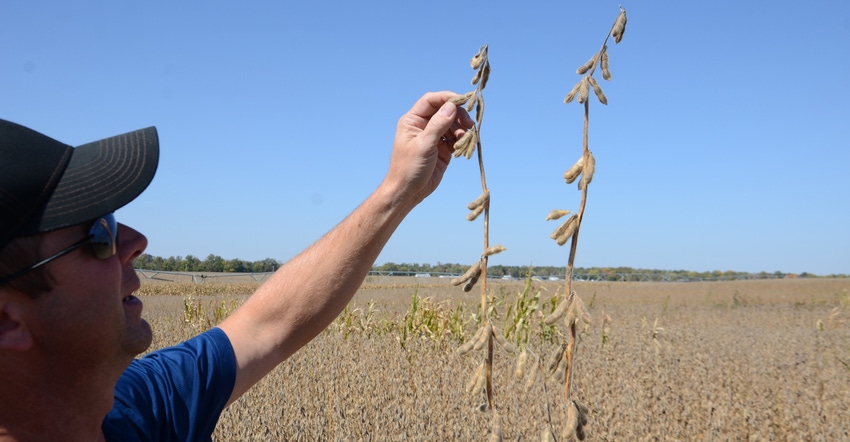
Soybean yields fluctuated with rainfall patterns in 2022. Those rare fields that received plentiful rain without excess all season posted very good yields. Fields that were dry in June and July but received good rain in August and at least early September produced good yields, but not great yields. Areas where it turned dry in August and stayed dry struggled to deliver average yields.
The Soybean Watch ’22 field is in central to south-central Indiana. Rainfall was too plentiful early, delaying planting until June 3-4. June and July were dry, but since the field was irrigated, the grower could irrigate when moisture sensors indicated plants needed water. Good rains returned in August and September, drying out very late. Irrigation within a couple of weeks of harvest helped top out yields.
Related: Why soybean yields were good, not great in 2022
“What we saw in this field was good growth most of the season,” says Steve Gauck, a regional agronomy manager for Beck’s, based near Greensburg, Ind. Beck’s sponsors Soybean Watch ’22.
“If they could have been planted sooner, they might have made a bigger factory and had more time early to put on extra nodes. But they jumped out fast and seemed to make up ground,” Gauck adds.
The grower normally plants 140,000 seeds per acre but upped it to 150,000 since he planted late. Gauck says that was a good move, helping add more nodes per acre. “We didn’t see much branching even where there were gaps, so having extra plants likely helped,” he says.
Bottom line
Inspecting the crop right before harvest, Gauck had a good idea what to expect. “There were fewer pods per node in the lower third to middle of the plant, and some of those pods only had two beans,” he recalls. “That probably was due to hot, dry weather stress early in the reproductive process.
“However, it was striking how well plants were podded near the top. Most of them had pods all the way up, and they were tall plants. Several nodes near the top had multiple pods per node. Bean fill was good too. Some pods near the top even had four beans per pod.”
When the combine wrapped up harvest, the final yield on the entire 38 acres averaged out just above 71 bushels per acre. Dry corners without irrigation yielded about 20 bushels per acre less than irrigated acres, based on yield monitor data. The field is irrigated because although the surface soil is a loam mix, gravel starts at about 3 feet deep or less. Removing the dry corners, irrigated acres yielded just over 72 bushels per acre.
That’s the highest single field yield this grower has achieved.
“There’s no question that a late-season spurt due to ample moisture helped these soybeans churn out good yields,” Gauck says. “Bean size was also large, even in beans in the top pods. When you have large beans and enough of them, you’re going to harvest good yields.”
About the Author(s)
You May Also Like




